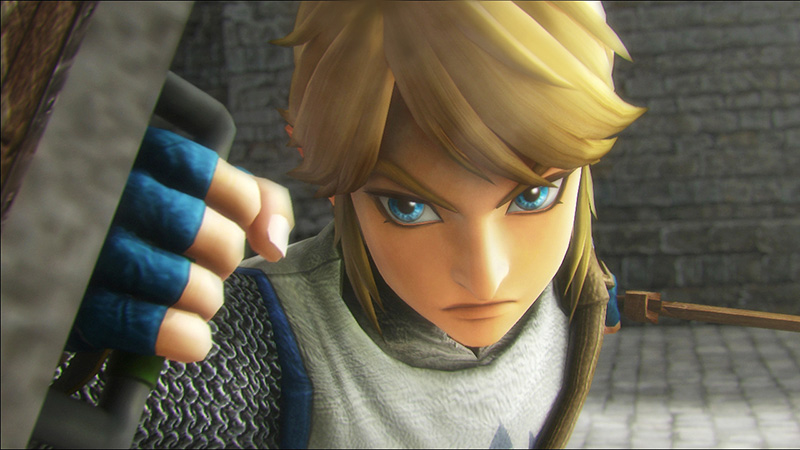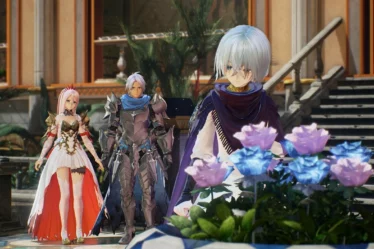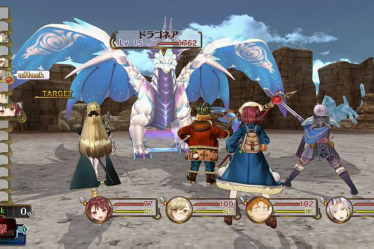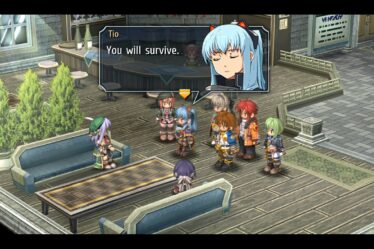
This article was originally published in Italian on GeekGamer.it in 2014.
For years now, Koei Tecmo has been offering spin-offs of its now famous Dynasty Warriors series, but paradoxically, not everyone may have noticed. After all, discussing titles based on well-known names from the Japanese animation industry doesn’t have quite the same impact as mentioning spin-offs of renowned franchises like Dragon Quest or The Legend of Zelda.
It’s no surprise, then, that much of the audience, especially in the West, has only recently become aware of the series, which has been developed by Omega Force for years, with the arrival of promotional videos dedicated to Hyrule Warriors. The pull of the successful Nintendo video game series has been so strong that many of its fans have been drawn to the new chapter in the hack-and-slash genre. Many of these fans hoped that this entry would finally do justice to the elegant character design of the Zelda series protagonists, who have been around for over twenty years. Will the charisma of Zelda and her companions be enough to hold up the entire operation?
Let’s start with the assumption that Hyrule Warriors is a spin-off of Dynasty Warriors, not The Legend of Zelda. It’s a phrase that, in itself, doesn’t say much, but actually serves to clarify the adherence of this Koei Tecmo title to the gameplay and stylistic conventions of the Nintendo brand.
Set in an original narrative universe where Zelda is a warrior queen who prefers to charge into battle and leave the recruits safe behind the walls of her castle, Hyrule Warriors features a plot built on narrative tricks designed to include as many characters from the series as possible. Like many “thrown-together” crossovers, Hyrule Warriors soon abandons (or perhaps never really commits to) its narrative premise, opting to bypass the lengthy – and well-made – CGI cutscenes at any time in favor of returning to the fast-paced gameplay. Perhaps it’s for the best that Koei Tecmo and Nintendo chose to include a story based on mere pretexts, as it works without getting bogged down in convoluted, nonsensical explanations typical of crossovers in other video game franchises (who said Final Fantasy Dissidia?). In one swift move, we see several familiar faces from the genre appear on-screen, including characters from The Legend of Zelda: Ocarina of Time, Twilight Princess, Skyward Sword, and other entirely new faces created specifically for this game.
It seems the number of characters from other episodes of the series is set to grow with upcoming updates (rumors suggest the inclusion of characters from Majora’s Mask in the coming months) and downloadable content to be released later. The dedication of the developers to the product is commendable. While there are currently only 13 playable characters (a number well below the average for DW titles), the Japanese studio is committed to expanding the roster with upcoming updates, some of which will be partially free.
Hyrule Warriors sees players navigating vast, explorable maps literally overrun by allied and enemy soldiers to defeat. Like any self-respecting hack-and-slash, this title makes extensive use of typical action game elements, such as combo chains, powerful moves that can be charged up and unleashed in moments of high tension, and so on. Some gameplay elements from the Nintendo brand make an appearance, but at its core, the gameplay doesn’t stray far from the monotony of any previous Dynasty Warriors title.
Basically, players need to follow the missions provided in Adventure Mode and other single-player modes, tracking the movement of troops on the map displayed at the top of the screen and acting accordingly. Protecting your strongholds and advancing against enemy ones is essentially what the game requires you to do for its entire duration, no more, no less.
Occasionally, you’ll be asked to complete missions where, in addition to smashing anything that moves on the battlefield, you’ll need to escort fragile objectives from point A to point B. These diversions don’t change the core gameplay typical of the series and actually remind players of the recent Dynasty Warriors 8: Xtreme Legends Complete Edition, the latest installment of the franchise on PS4, with its overwhelming amount of content. However, it would be unfair to compare the two titles, considering DW 8:XLCE is a revised and expanded version of a previously released title. Still, it’s worth noting that there are currently better options on the market for Musou/Dynasty Warriors fans.
In addition to the story mode, there’s an Adventure Mode, where you must complete missions under specific conditions, a variant of the same mode allowing for endless play until a game over, and a Free Mode that lets you play previous levels as any of the characters unlocked in other modes.
Above all modes, there’s a bazaar where players can spend rupees – the Zelda series currency – to level up characters or create enhancement potions using materials collected on the battlefield. The idea of managing character growth outside of gameplay modes is definitely clever, as each playthrough, whether short and shared or extended in the cinematic story mode, gives the sense of growing and improving stats.
However, all the typical flaws of the series persist. For example, there’s a lack of technical optimization that causes the title’s graphics to completely collapse during two-player missions. In these situations, one player will experience the adventure through the gamepad screen while the other unleashes powerful moves on the TV. While on paper this system works, and even makes use of the often criticized Wii U controller (for once!), it doesn’t quite hold up in-game, where an obvious graphical downgrade is accompanied by significant gameplay issues, such as enemies only appearing when you walk in front of them and a loot system bordering on incompetence: while playing cooperatively in the story mode, for example, only the main player can access reward chests, interrupting the on-screen action with a cutscene that, while “Zelda-esque,” doesn’t quite match the Koei Tecmo gameplay philosophy. This seemingly small technical oversight forces the main player to run back and forth on the map to reach a treasure unlocked by the second player.
Fortunately, Hyrule Warriors boasts a solid artistic direction. Of course, it feels a bit strange to see characters like Cia, the seductive evil sorceress who looks like she stepped out of a Dead or Alive game, alongside the pure and chaste Zelda, but once you get past the initial shock, the anime-style redesign of the entire cast is easy to get used to. The polygonal design is particularly impressive when looking at characters and specific bosses (all taken from the Nintendo series), and average for the rest. As mentioned earlier, during multiplayer, lighting effects, aliasing, and shaders suddenly disappear to allow the game to run without compromising the frame rate too much, but the gameplay ends up so altered that we can’t really recommend the experience. The soundtrack and adaptation feature rock arrangements and the grandeur of Koji Kondo and company’s most famous themes, while the Italian translation ensures the title is accessible to players of all ages.
Hyrule Warriors is not an official entry in The Legend of Zelda series, nor a must-have for anyone who owns a Wii U. It remains an interesting experiment aimed at fans of the series and those, like us, who enjoy the therapeutic appeal of the mild carnage on-screen that the Dynasty Warriors series has been offering for years. It’s not recommended (at least not at full price!) for anyone who would prefer a more serious title or one with a more nuanced gameplay identity.


